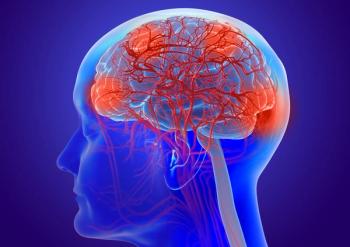
Oncology NEWS International
- Oncology NEWS International Vol 13 No 6
- Volume 13
- Issue 6
Stereotactic RT Controls Localized, Low-Grade Gliomas
SALT LAKE CITY-When surgery and chemotherapy have failed, stereotactic radiation therapy (RT) provides good local control of small, low-grade gliomas in children for many years, Karen J. Marcus, MD, said at the American Society for Therapeutic Radiology and Oncology 45th Annual Meeting (abstract 120). In the prospective trial, about two thirds of children in whom surgery or chemotherapy had not controlled the disease were alive with no progression 8 years after stereotactic RT
SALT LAKE CITYWhen surgery and chemotherapy have failed, stereotactic radiation therapy (RT) provides good local control of small, low-grade gliomas in children for many years, Karen J. Marcus, MD, said at the American Society for Therapeutic Radiology and Oncology 45th Annual Meeting (abstract 120). In the prospective trial, about two thirds of children in whom surgery or chemotherapy had not controlled the disease were alive with no progression 8 years after stereotactic RT.
"The management of low-grade gliomas in children remains controversial, and there are a number of factors that influence treatment, including tumor location, presence of neurofibromatosis, and age of the patient," said Dr. Marcus, assistant professor of radiation oncology (pediatrics), Harvard Medical School.
Dr. Marcus and her colleagues monitored outcomes in 50 children (median age, 9 years) who had localized, low-grade astrocytomas (including optic gliomas) measuring no more than 5 cm and who were treated with stereotactic radiation therapy between 1992 and 1998. The indications for stereotactic radiation therapy were progression after subtotal resection or biopsy (38 patients) and progression after chemotherapy (12 patients).
A 6-MV linear accelerator was used to deliver the radiation. The patients’ heads were positioned with two types of non-invasive relocatable head-frames, a TLC frame for children requiring general anesthesia and the Gill-Thomson-Cosman frame for older children, Dr. Marcus said. In planning the radiation therapy, the investigators fused CT and MRI images to determine the tumor extent, used the preoperative volume as the clinical target volume, and added a 2-mm margin. The patients received a mean total radiation dose of 52.2 Gy (range, 50.4 to 58 Gy) in daily fractions of 1.8 Gy.
Outcomes were assessed over a median follow-up of 7 years (range, 1 to 10 years). Progression-free survival was about 83% at 5 years and 65% at 8 years (Figure 1) and 98% and 82%, respectively, for overall survival (Figure 2).
Six patients had local progression between 15 and 92 months after radiation therapy; in two of these patients, progression was to anaplastic astrocytoma at 3 and 7 years, respectively. "All progressions were within the primary tumor bed, and all patients had received the full prescription dose. There were no failures at or adjacent to the margin," she noted.
Five patients had CNS dissemination of their disease about 1 to 7 years after their radiation therapy; all of these patients had primary hypothalamic/optic system tumors. Two of these five patients remain alive with stable disease, she said.
Moya moya disease occurred in three patients, including one who had neurofibromatosis, and a second cancer (a primitive neuroectodermal tumor) was diagnosed in one patient 6 years after therapy.
Overall, six patients have died. Half of the deaths were caused by CNS dissemination, the other half by the primitive neuroectodermal tumor (which may have been radiation-induced) and the progressions to a high-grade tumor.
"Stereotactic radiation therapy certainly provides excellent local control for children with small, low-grade glial tumors," Dr. Marcus said. "Marginal failures have not been observed, and this supports the use of very limited margins to minimize late toxicity. However, late recurrences continue to occur, stressing the importance of continued follow-up."
The findings revealed a discordance between the pathologic features and the behavior of hypothalamic/optic system tumors, Dr. Marcus noted. "The hypothalamic/optic system tumors have a propensity for CNS dissemination despite their low-grade appearance. This suggests a different biology from other low-grade gliomas, and I think it will be an area for further research," she said.
The children’s neuropsychological outcomes are still being analyzed, but preliminary results suggest that they are fairly similar to those of children who receive surgery alone. "I think this is going to be very important because frequently, all neurocognitive effects are attributed to radiotherapy; we are finding that some children who were not treated with radiotherapy have very similar neurocognitive outcomes," she said.
Although low-grade gliomas in children could also be treated with 3D conformal radiation therapy, Dr. Marcus recommends stereotactic radiotherapy. "I feel very strongly that stereotactic radiotherapy would be more appropriate than just 3D conformal radiotherapy, unless the tumor was extremely large and unable to be treated," she said, adding that newer technologies now make it possible to treat even large tumors with stereotactic radiotherapy.
Articles in this issue
over 21 years ago
Spiral CT Scanning Finds Very Early Lung Cancersover 21 years ago
Gemtuzumab Effective in AML Pts Over 60 in First Relapseover 21 years ago
NCI Outlines Benefit Data of Physical Activity for Five Ca’sNewsletter
Stay up to date on recent advances in the multidisciplinary approach to cancer.





![According to John Henson, MD, “What we need are better treatments to control the [brain] tumor once it’s detected.”](https://cdn.sanity.io/images/0vv8moc6/cancernetwork/e0d29c38bb732429ae370e4ef7d1829a10c96446-2992x1684.png?w=350&fit=crop&auto=format)













































































